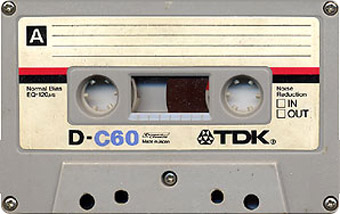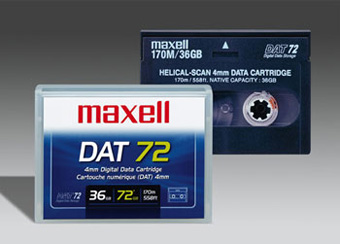Background
Evolution from Cassette to CD
With the introduction of the cassette to the US market in 1964, a revolution was sparked in the music industry. Sales boomed and revenues skyrocketed as these cassette tapes became a more convenient and affordable means for consumers to listen to music. After the 1980s however, tapes declined as a new media listening to music were introduced.
The compact disc became popular after the cassette tape when it was first introduced around the early 1980s. These CDs were more compact than the cassette tape and also easier to maneuver with when searching through tracks to which one would want to listen. Also, as the CD was viewed as a medium which was more resilient to damage and weathering than tapes and records, it was highly acclaimed in its introduction to consumers.

Cassette Tape
Decline of Cassette Tapes
The sales of pre-recorded tapes soon became overshadowed by the introduction of the revolutionary compact disc, known more commonly as the “CD.” In 1993 alone, over 5 million CD players were shipped while cassette players dropped drastically 7% to 3.4 million. At this point the sales of cassettes have dropped so much that their sales only constitute less than 4% of the music sales in the US.
Nevertheless, there is a small demand for this seemingly obsolete cassette tape. And although tape players and recorders are becoming more hard to find as they become more scarce, they are still being sold today. Blank tapes and the equipment needed to utilize them are still in production despite the ascendancy of the CD and its successors.
Failure of DATs and Minidiscs
In the early 90s, DAT’s and minidiscs were introduced into the market as possible successors of the declining cassette tape. DAT stands for Digital Audio Tape. This introduction was an effort to implement new ways of listening to music. The general move was to digitize music so as to make more high-definition and highly technological music available to the common consumer.
However, with the simultaneous introduction of the CD-R during the early 90s, the DAT and minidisc revolution was short-lived as CD-R’s quickly displaced them. And, as the CD and the CD-R, or recordable CD, become more easily accessible and affordable, the CD established itself quickly as the “new” cassette tape.

DAT tapes
From CDs to MP3
Over 1 billion CDs had been sold by the year 1992, and in 2001 and in 2002 over 400 million CDs were sold. The introduction of the CD-R would then allow individual consumers to record their own mixes of songs onto CD. With that, the decline of CD sales began. As CD-R’s became more heavily used by consumers to store music, the decline of CDs became noticeable.
With the decline of the CD came the rise of the MPEG-1 Audio Layer 3, better known as the MP3. These digital music files became widely available through peer-to-peer downloading programs such as Kazaa and Bearshare. As individuals illegally download this music through these programs, the sales of the CDs that would initially have been purchased decrease substantially. With about 2 billion of these audio files being downloaded monthly, this evidently poses a serious threat to the music industry.